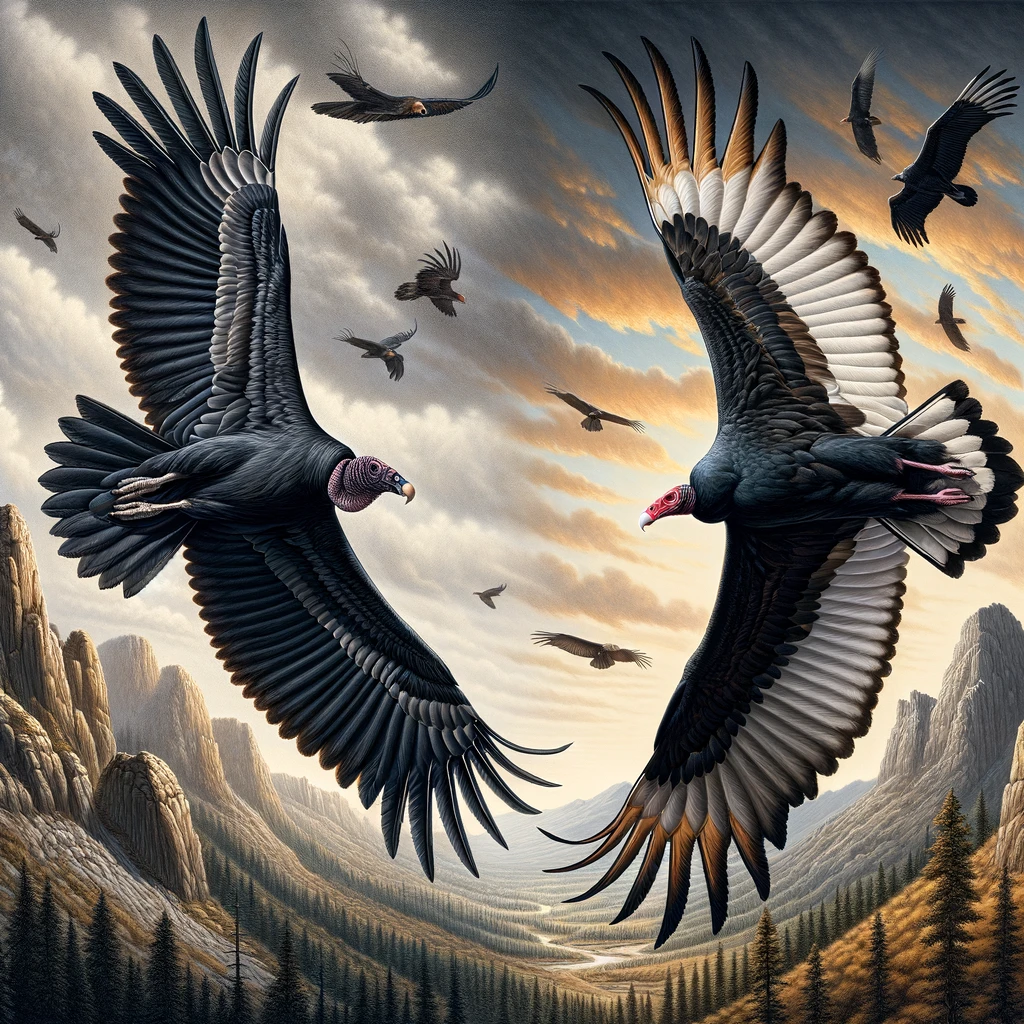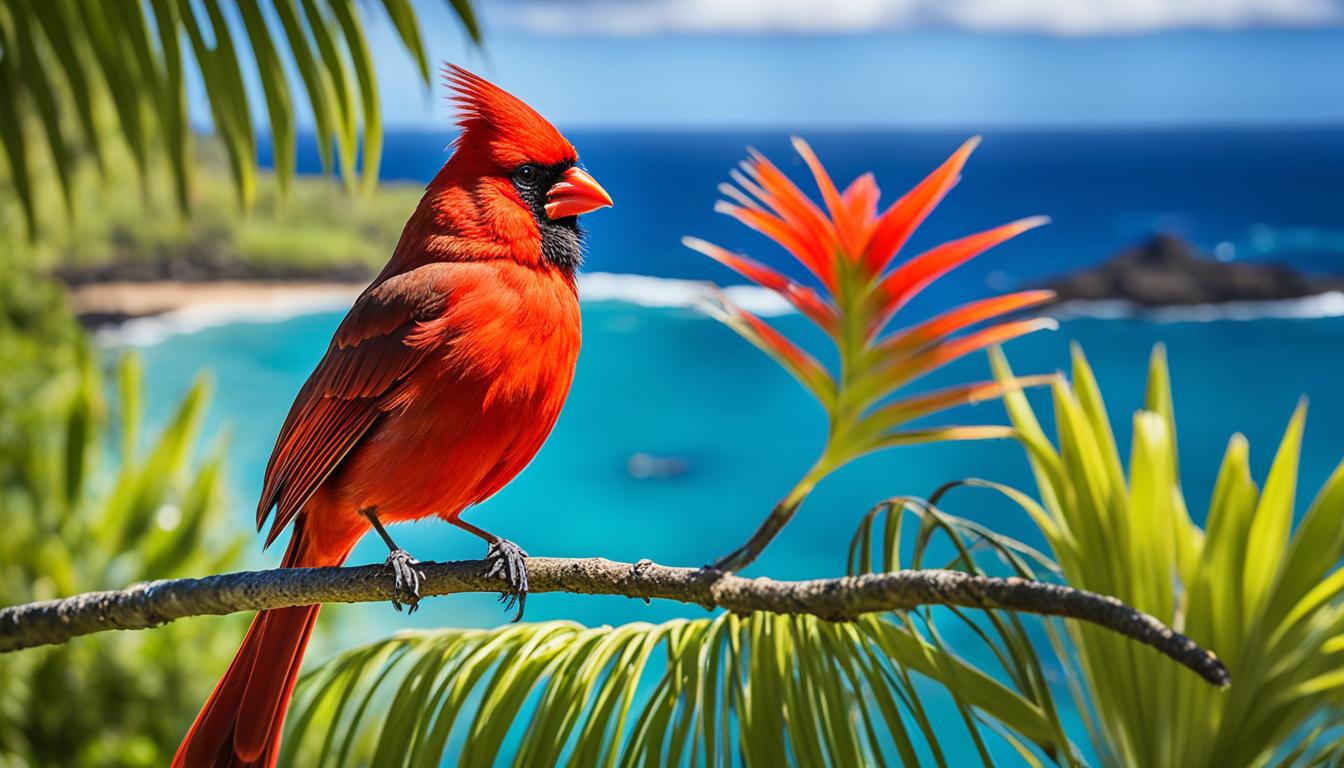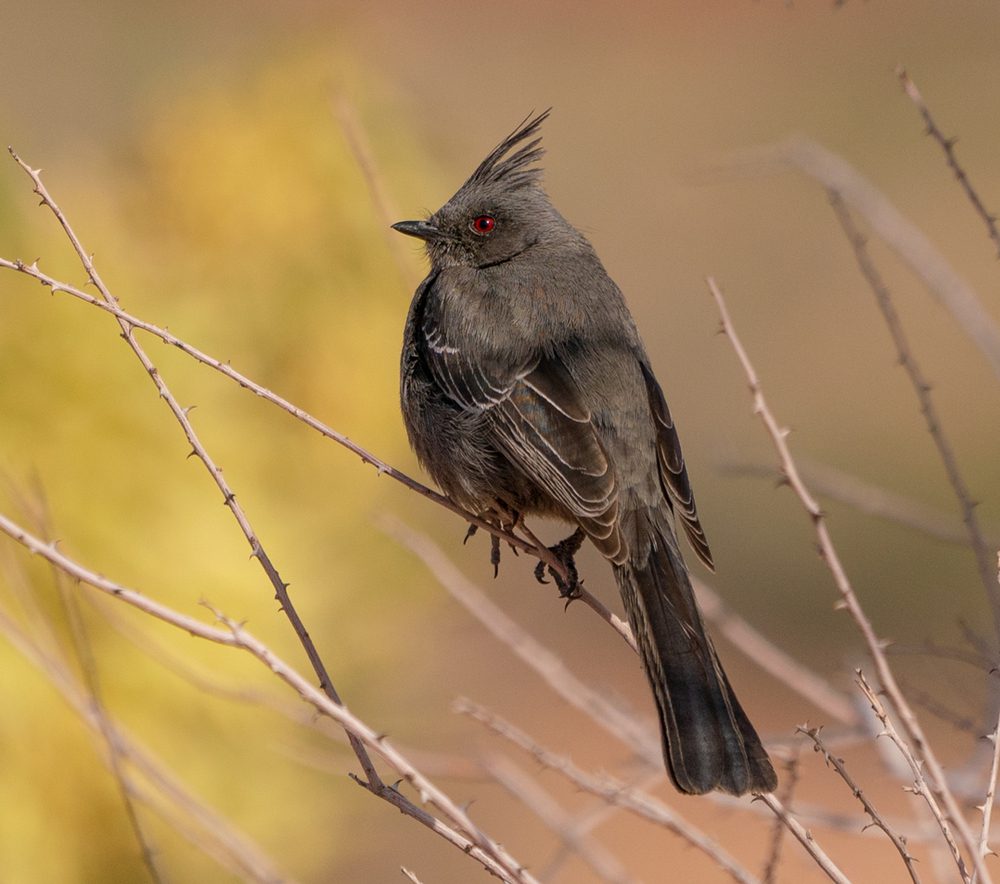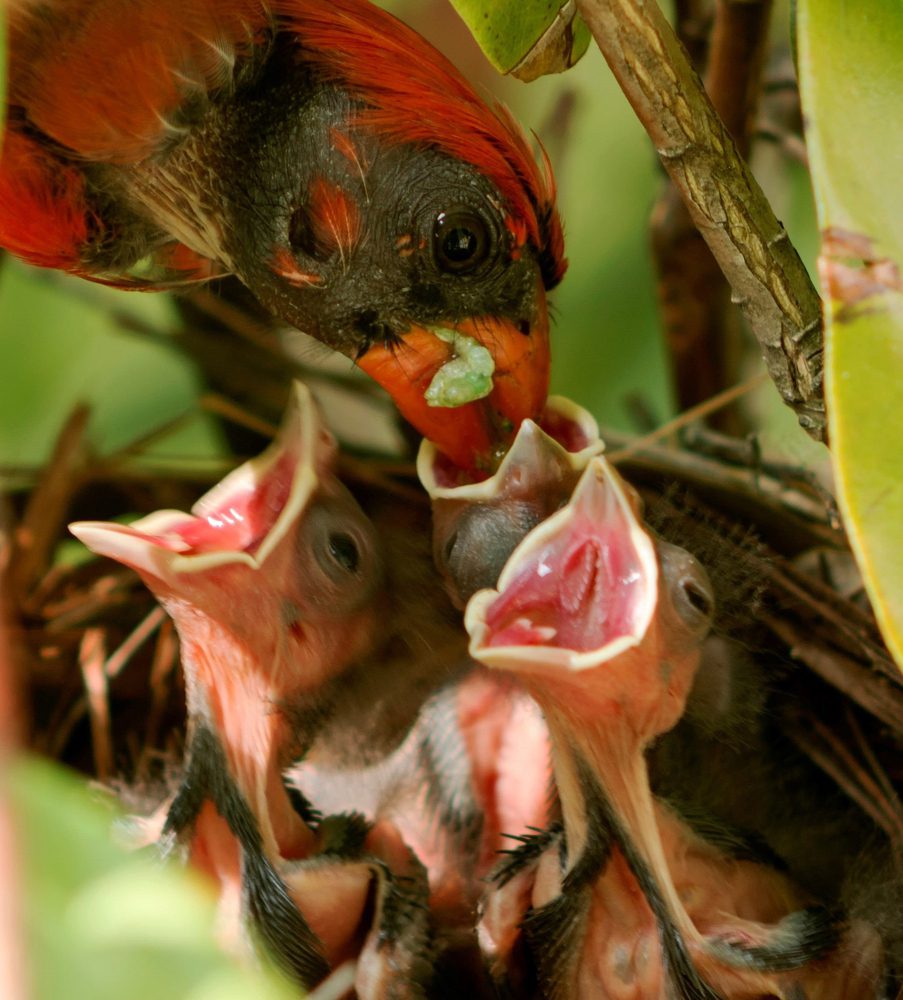Black Vulture vs Turkey Vulture – Did you know that black vultures and turkey vultures are not only essential for our ecosystem but also have distinct characteristics that set them apart from each other? These scavenger birds play a crucial role in keeping our environment clean by feeding on dead animal carcasses. Despite their similarities, there are key differences between these two species that make them fascinating subjects for bird enthusiasts and researchers alike.
Key Takeaways:
- Black vultures and turkey vultures have different appearances and sizes, with variations in their head color and wing patches.
- Turkey vultures have a highly developed sense of smell, while black vultures rely on their sharp eyesight when searching for food.
- Both species have unique adaptations that aid in their scavenging lifestyle, such as featherless heads and powerful bills.
- Turkey vultures display a distinctive flight pattern and teeter in flight, while black vultures have a flatter posture and flap more frequently.
- Understanding these differences can enhance birdwatching experiences and contribute to a better understanding of these unique bird species.
Appearance and Size
When it comes to the appearance and size of black vultures and turkey vultures, there are notable differences between the two species. These distinctions help ornithologists and bird enthusiasts identify them with ease. Let’s explore their unique characteristics:
Turkey Vulture:
- Reddish head
- Wingspan around 6 feet
- Dihedral wing configuration
- Large white patches on wings
Black Vulture:
- Ash-grey head
- Slightly shorter wingspans at 5 feet
- Dihedral wing configuration
- Whitish patches near the tips of wings
These distinct features make it possible to differentiate between the black vulture and the turkey vulture at a glance. Below is an image that illustrates the distinctive characteristics of both vulture species:
As you can see from the image, the black vulture’s ash-grey head and whitish wing patches are distinct from the turkey vulture’s reddish head and large white wing patches. Observing these physical attributes can assist birdwatchers and researchers in accurately identifying and studying these fascinating scavenger birds.
Black Vulture vs Turkey Vulture Feeding Habits
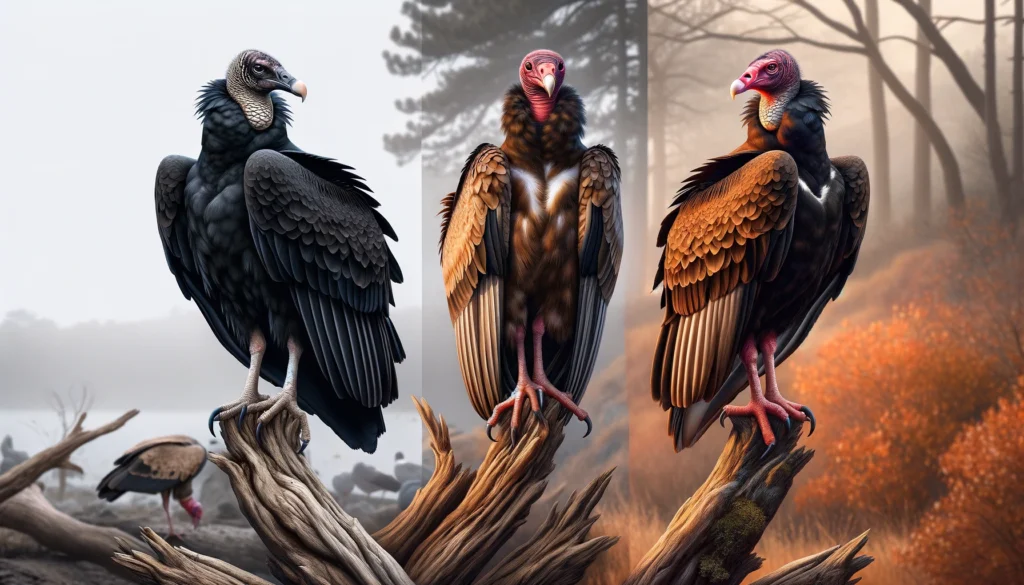
Black vultures and turkey vultures exhibit distinct feeding behaviors that set them apart in the avian world. While both species are scavenger birds, their approaches to finding food differ significantly.
Turkey vultures rely on their highly developed sense of smell to locate their next meal. Their olfactory abilities are remarkable, allowing them to detect the scent of dead animals even when they are as fresh as 12 hours old and located over a mile away. This acute sense of smell enables them to cover vast areas in search of carrion, effortlessly locating their food sources.
Black vultures on the other hand, don’t possess the same level of olfactory prowess as their turkey vulture counterparts. Instead, they rely heavily on their sharp eyesight to spot potential food sources. These vultures are vigilant observers of their surroundings, scanning the landscape for any signs of activity or movement that might indicate the presence of a carcass.
Often, black vultures will closely monitor turkey vultures, tracking their flight patterns to fresh carcasses. When the time is right, black vultures take advantage of the turkey vultures’ superior olfactory skills and follow them to the meal, sometimes engaging in aggressive behavior to secure a share.
Black vultures lack a highly developed sense of smell, relying on their sharp eyesight to locate food.
| Turkey Vulture | Black Vulture |
|---|---|
| Highly developed sense of smell | Lacks a highly developed sense of smell |
| Can detect dead animals as fresh as 12 hours old from over a mile away | Relies on sharp eyesight to locate food |
| Rely on their sense of smell to find their meals | Often follows turkey vultures to fresh carcasses |
Adaptations and Abilities
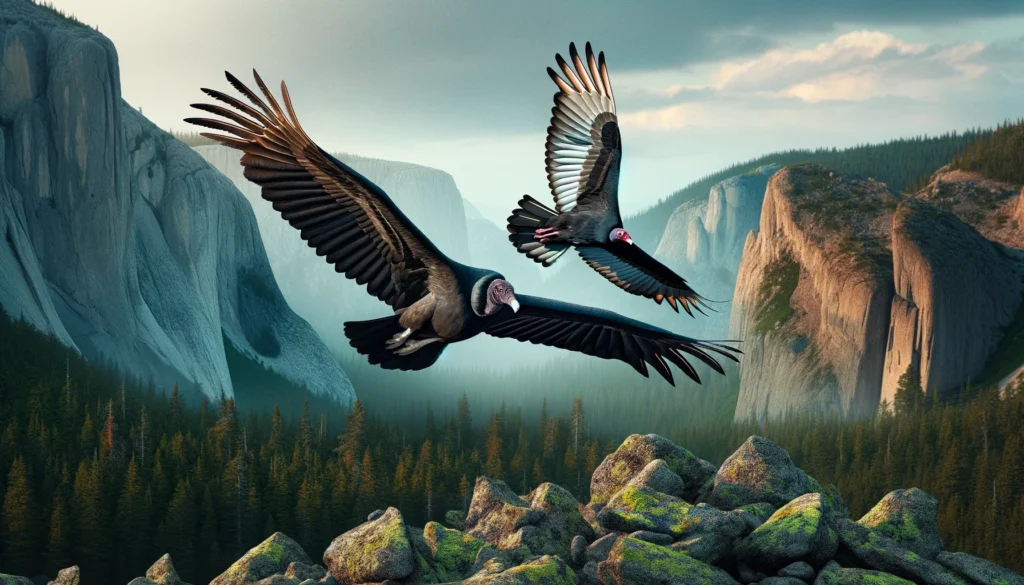
Both black vultures and turkey vultures possess remarkable adaptations and abilities that enable them to thrive as scavenger birds. These unique traits enhance their efficiency in the scavenging lifestyle and allow them to fulfill their essential role as nature’s cleanup crew.
Featherless Heads for Clean Feeding
One key adaptation of both black vultures and turkey vultures is their featherless heads. This distinct feature serves a practical purpose in their scavenging behavior. Feeding on dead carcasses can be messy and unsanitary, but by lacking feathers on their heads, vultures are better able to keep clean and avoid contamination. Their featherless heads also prevent bacteria and parasites from clinging to their plumage.
Powerful Bills for Efficient Consumption
Both species of vultures boast powerful bills that enable them to quickly penetrate tough hides and tear through the flesh of their prey. Their sharp, hooked bills are the perfect tool for efficiently consuming carrion, making them highly specialized in their scavenging endeavors.
Unique Bacterial Metabolism
Vultures possess a remarkable ability to metabolize bacteria that would be harmful to other scavengers. They have a highly acidic digestive system that allows them to consume carrion infected with bacteria, including strains associated with flesh-eating bacteria. This unique adaptation not only allows vultures to thrive in their scavenger role but also helps prevent the spread of disease from decaying carcasses in the environment.
Roosting Behavior
When it comes to roosting, a large group of vultures is known as a “wake.” Both black vultures and turkey vultures often roost together, seeking safety and companionship in numbers. However, black vultures have been known to cause more disturbances in residential areas, occasionally venturing beyond their scavenging habits by attacking and killing young livestock.
In order to deter vultures from roosting in specific locations, various methods have been employed. Laser pointers, loud sounds, and other means of non-lethal harassment are often used as deterrents. These techniques aim to create an inhospitable environment for vultures, ensuring the safety of both humans and livestock.
Defense Mechanisms
Black vultures have a fascinating defense mechanism that sets them apart from turkey vultures. In order to deter potential threats, black vultures have the ability to project vomit. Although not venomous, the vomit of black vultures is acidic, causing a burning sensation in the eyes of those who come into contact with it. This unique behavior is not observed in turkey vultures, making it a distinct characteristic of black vultures.
Black vultures use their vomit as a form of defense when they feel threatened. By projecting their acidic vomit towards predators or other perceived threats, black vultures can effectively deter them and protect themselves and their young. This behavior showcases the strategic adaptability of black vultures in their natural environment.
Unique Behaviors
Turkey vultures and black vultures exhibit distinct behaviors that set them apart from each other. These behaviors contribute to their individual characteristics and survival strategies.
Turkey Vulture Flight
Turkey vultures have a unique flight pattern characterized by holding their wings in a V shape, known as a dihedral. This flight posture allows them to soar effortlessly, utilizing thermal updrafts. They rely on air currents to conserve energy as they search for carrion. In addition to the V-shaped wings, turkey vultures have a teetering or wobbling motion during flight, especially in strong winds. This behavior is believed to aid in their flight stability, allowing them to navigate turbulent air currents more effectively.
Black Vulture Flight
Unlike turkey vultures, black vultures have a flatter flight posture. They maintain a more upright position while in the air, with their wings almost parallel to the ground. This flight style enables them to exert more energy in flapping their wings. Black vultures are known for their frequent wing flapping during flight, which allows them to rapidly gain altitude or quickly maneuver in pursuit of food.
Differences in Migratory Behavior
Turkey vultures exhibit migratory behavior, often traveling long distances in search of suitable foraging grounds or breeding sites. They can cover vast territories during their annual migrations, following the availability of food sources and favorable weather conditions. In contrast, black vultures are more sedentary and tend to stay in the Southeastern United States year-round. They establish stable home ranges and do not undertake extensive migratory journeys like their counterparts.
| Turkey Vultures | Black Vultures |
|---|---|
| Flight posture: V-shaped wings | Flight posture: Flatter wings |
| Flight stability: Teetering or wobbling | Flight stability: Upright posture |
| Migratory behavior: Extensive migrations | Migratory behavior: Sedentary in the Southeastern US |
Table: Contrasting flight behaviors and migratory patterns of turkey vultures and black vultures.
Conclusion
To wrap things up, black vultures and turkey vultures are both types of scavenger birds, but they have some key differences in how they look, what they eat, and how they act. These differences help us tell them apart, making birdwatching more interesting and helping us learn more about these cool birds.
In terms of looks, black vultures have a grayish head, while turkey vultures have a red head. Also, turkey vultures have bigger wings with noticeable white patches, but black vultures have shorter wings with white spots near the ends.
Their eating habits are different too. Turkey vultures have a super strong sense of smell that helps them find food from far away, but black vultures rely more on their sharp eyesight. Often, black vultures will follow turkey vultures to snatch away their food.
As for their behavior, both types of vultures might hang out together, but black vultures tend to be more aggressive and can even threaten young farm animals. Also, black vultures have a special trick where they can throw up a nasty acid to scare off dangers, something turkey vultures don’t do.
By knowing these unique traits of black and turkey vultures, not only does it make watching these birds more fun, but it also gives us a peek into their intriguing lives as nature’s clean-up crew.
FAQ
What are the key differences between black vultures and turkey vultures?
Black vultures and turkey vultures have differences in appearance, size, feeding habits, roosting behavior, and unique behaviors. Understanding these differences can help identify each species and enhance birdwatching experiences.
How can I identify a black vulture and a turkey vulture?
Black vultures have ash-grey heads, while turkey vultures have reddish heads. Turkey vultures have a wingspan of approximately 6 feet, whereas black vultures have slightly shorter wingspans at 5 feet. Additionally, turkey vultures have large white patches on their wings, while black vultures only have whitish patches near the tips of their wings.
How do black vultures and turkey vultures differ in their feeding habits?
Turkey vultures have a highly developed sense of smell and can detect fresh carcasses from over a mile away. They rely on their sense of smell to find their meals. In contrast, black vultures lack a highly developed sense of smell and rely on their sharp eyesight to locate food. They often follow turkey vultures to fresh carcasses and may compete for the meal.
What adaptations and abilities do black vultures and turkey vultures possess?
Both black vultures and turkey vultures have featherless heads that help them stay clean while feeding on dead animals. Their powerful bills enable them to quickly penetrate tough hides. Additionally, vultures can metabolize harmful bacteria that would be detrimental to other scavengers.
Do black vultures and turkey vultures roost together?
Yes, black vultures and turkey vultures often roost together, forming a large group called a “wake.” However, black vultures can cause more disturbances in residential areas and have been known to attack and kill young livestock.
What defense mechanisms do black vultures and turkey vultures possess?
Black vultures have a unique defense mechanism where they can project vomit as a means of deterring potential threats. The acidic vomit can cause a burning sensation in the eyes of the recipient. Turkey vultures do not exhibit this behavior.
What are some unique behaviors of black vultures and turkey vultures?
Turkey vultures have a distinctive flight pattern where they hold their wings in a V shape and teeter or wobble in flight, especially in strong winds. Black vultures have a flatter flight posture and flap more frequently than turkey vultures. Turkey vultures also exhibit more migratory behavior compared to black vultures.
What can understanding the differences between black vultures and turkey vultures contribute to?
Understanding these differences can enhance birdwatching experiences, aid in vulture identification, and contribute to a better understanding of these unique bird species and their behavior as scavenger birds.

